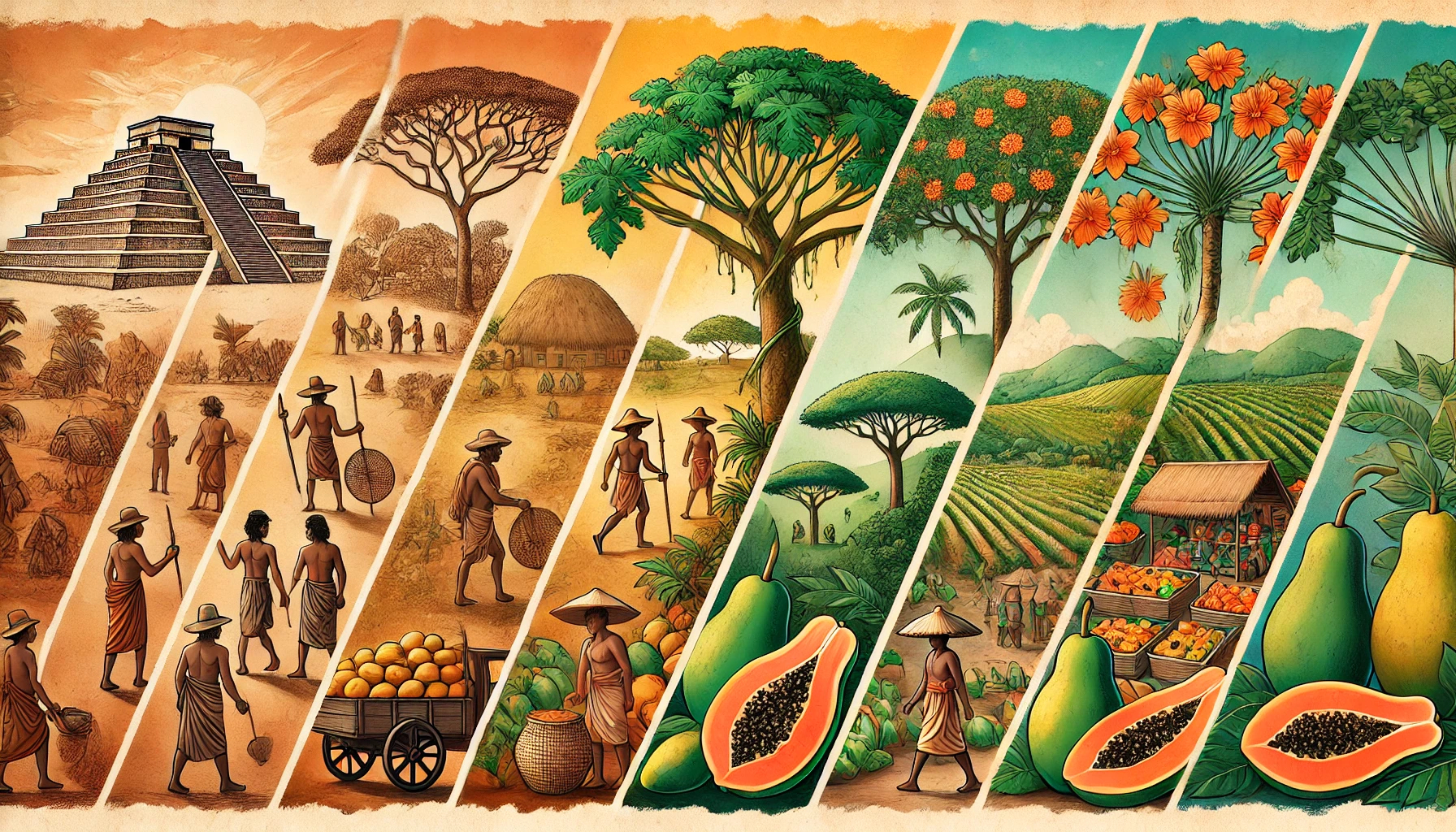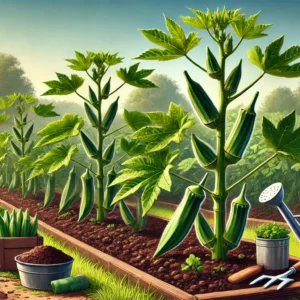The papaya, scientifically known as Carica papaya, is a tropical fruit celebrated for its vibrant flavor, versatility, and health benefits. Its journey through history is a fascinating tale of cultivation, trade, and cultural significance spanning centuries and continents. From its origins in the tropical regions of the Americas to its widespread cultivation around the world today, the papaya has left an indelible mark on human societies and culinary traditions.
Origins and Ancient Cultivation
The papaya is believed to have originated in southern Mexico and neighboring regions of Central America, where it was first domesticated by indigenous peoples thousands of years ago. Archaeological evidence suggests that papaya cultivation dates back to as early as 4000 BCE in the Mesoamerican region, where it was revered both for its delicious fruit and medicinal properties.
Ancient civilizations such as the Maya and the Aztecs held the papaya in high regard, using it not only as a food source but also in traditional medicine and religious rituals. The fruit’s nutritional value, particularly its high vitamin C content, made it a valuable addition to their diets, while its digestive enzymes were believed to aid in digestion and promote overall health.
Spread Across Continents
The Spanish explorers who ventured into the New World during the Age of Exploration were among the first Europeans to encounter the papaya. They were introduced to this exotic fruit by the indigenous peoples of the Americas, who shared their knowledge of its cultivation and uses.
The Spanish conquest of the Americas in the 16th century facilitated the spread of papaya cultivation to other parts of the world. Papaya seeds were carried by Spanish colonizers to tropical regions such as the Caribbean, the Philippines, and parts of Africa and Asia, where they found favorable climates for growth. Over time, papaya became established in these regions, adapting to local conditions and becoming an integral part of their culinary and agricultural landscapes.
Colonial Trade and Globalization
During the colonial era, papaya emerged as a valuable commodity in global trade networks. European colonial powers established plantations in tropical colonies to cultivate crops such as sugar, coffee, and tobacco for export to Europe. Papaya was often grown alongside these cash crops as a supplementary crop, providing additional income for plantation owners and sustenance for local communities.
The introduction of papaya to new regions outside its native range led to the development of different cultivars and varieties, each adapted to the unique environmental conditions of its respective region. This diversity in papaya cultivars contributed to its resilience and widespread cultivation across diverse climates and landscapes.
Modern Cultivation and Commercialization
In the 20th century, advancements in transportation and agricultural technology further facilitated the global spread of papaya cultivation. Improved shipping methods allowed for the export of fresh papaya to distant markets, while developments in plant breeding and genetic engineering led to the development of high-yielding, disease-resistant papaya varieties.
Today, papaya is grown commercially in tropical and subtropical regions around the world, with major producers including countries like Brazil, India, Indonesia, Mexico, and Thailand. It is valued not only for its delicious flavor but also for its nutritional benefits, including its high levels of vitamin C, vitamin A, fiber, and antioxidants.
Cultural Significance and Culinary Uses
The papaya holds significant cultural and culinary importance in many societies where it is cultivated. In tropical regions such as Southeast Asia and the Caribbean, papaya is a staple ingredient in traditional dishes, salads, and desserts. Its sweet, tropical flavor lends itself well to both savory and sweet preparations, making it a versatile ingredient in a wide range of cuisines.
In addition to its culinary uses, papaya continues to be valued for its medicinal properties in traditional medicine systems around the world. Its enzymes are believed to aid in digestion, while its high vitamin content supports overall health and well-being. Papaya extracts and supplements are also used in modern herbal medicine for various purposes, including digestive health and skincare.
Conclusion
From its ancient origins in the tropical forests of the Americas to its widespread cultivation and commercialization in the modern world, the papaya has journeyed through history, leaving a legacy of culinary delight, cultural significance, and nutritional value. As global demand for exotic fruits continues to rise, the papaya remains a beloved and indispensable fruit enjoyed by millions around the world.



